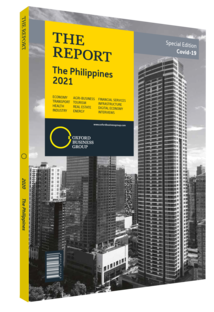The evolution of office space in the Philippines
With the pandemic inducing a significant shift towards working from home as companies follow social-distancing rules, in the Philippines co-working spaces are emerging as a solution for firms seeking to decentralise while ensuring a sound operating environment for employees. In a sign of the economic fallout from Covid-19, in late September 2020 the Department of Trade and Industry said that around 90,000 businesses – or 6% of all those registered – remained closed. However, adaptation has been key to ensuring business continuity for those that have stayed open or reopened.
Remote Workforce
A report from advisory firm Willis Towers Watson found that during March 2020, when Luzon was under its strictest lockdown, 99% of office-based firms allowed employees to work from home and 44% facilitated social distancing through minimal office staff and staggered shifts. Around half the companies surveyed had adopted multiple types of work arrangements for their employees. While in many cases this shift has been essential, some members of the newly remote workforce have faced challenges such as inadequate work space and poor ICT infrastructure. This is especially important as the digital shift has put pressure on already lagging bandwidth. The Philippines’ average download speed for fixed broadband was 27.07 Mbps in October 2020, compared to 229.42 in Singapore, 183.58 in Thailand and 140.74 in China, according to Ookla’s Speedtest Global Index.
Indeed, the shift to remote work has highlighted the importance of improving connectivity. In April 2020 a World Economic Forum report on worldwide changes predicted that the pandemic would “catalyse sustained collaboration between the public and private sectors to increase internet access beyond the current crisis”. In the meantime, companies and employees are likely to search for alternatives. “In the Philippines people want to work near home, but not from home,” Lars Wittig, country manager of Regus and Spaces by IWG, told OBG. “This is because home internet connections are often poor, and it is not always easy to carve out a dedicated work space amid the neighbourhood noise.”
Co-Working Alternatives
Co-working spaces could be poised to fill the void. Since the pandemic such facilities have aimed to enable creativity and engagement, as well as enhance continuity planning for businesses looking to reorganise the workforce and cut real estate costs. To meet social-distancing requirements, co-working spaces have reduced capacity, created buffer zones, and reinforced cleaning and personal hygiene practices. WeWork Philippines’ enterprise memberships expanded by 10% between March and July 2020 as large firms made flexible alternative arrangements for employees. Despite being down from the 25% growth seen in 2019, this signalled co-working spaces have a role to play in the recovery.
“The pandemic sparked a new trend in the Philippines – one of working not from home, but near home,” Jet Yu, founder and CEO of commercial real estate consultancy PRIME Philippines, told OBG. “Co-working spaces are perfectly positioned to fit this market sentiment.” The emphasis on proximity has been compounded by a push by many large firms to decentralise operations and close offices. Doing so not only cuts overhead costs, but disperses staff and minimises viral risk for a large portion of the workforce.
The global shift to remote work could also lead to de-urbanisation and decentralisation in large population centres. “The pandemic has led to an emphasis on flexibility in terms of work stations and work-fromhome solutions,” Wittig told OBG. “Even before the outbreak of Covid-19 the co-working segment was booming. When the pandemic is over, people will no longer want to go to crowded downtown areas and, as such, suburban and provincial areas will see the most significant growth. At the same time, many large companies are looking to complement headquarters with satellite offices near employees’ homes – a trend that is likely to benefit co-working spaces,” he added.
You have reached the limit of premium articles you can view for free.
Choose from the options below to purchase print or digital editions of our Reports. You can also purchase a website subscription giving you unlimited access to all of our Reports online for 12 months.
If you have already purchased this Report or have a website subscription, please login to continue.

